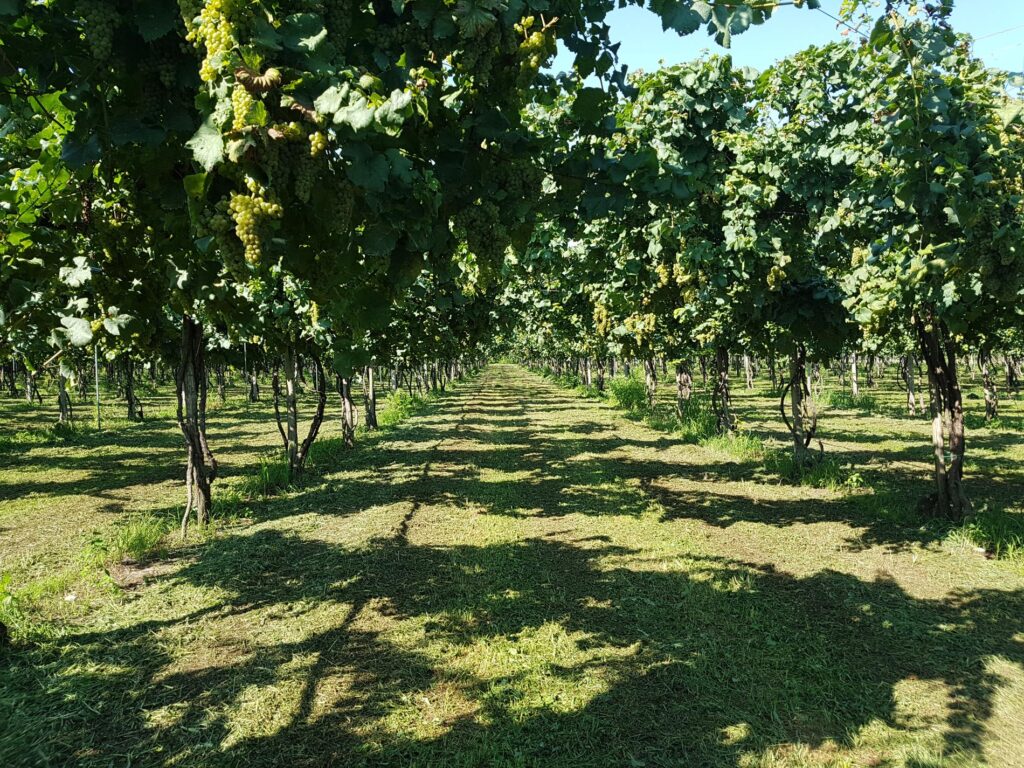A spectacular approach to viticulture
One of the unique marvels that characterise grape cultivation in the Treviso province, the district renowned for its excellence for prosecco, is its application of the bellussera cultivation technique. But do you know what this actually means? If you were to fly a drone over the vineyards bordering the Piave river, for example, and photograph them from above, then you would see that some take on the form of a giant honeycomb – a rolling expanse of this natural geometric design, creating an almost abstract pattern over the land. Returning to ground level and strolling between the lines of grapevine, you would be struck by the monumental magnificence of the vines: imposing specimens with stems often as wide as tree trunks, and a dense green roof of shoots and leaves towering overhead, intersecting and radiating out like the spokes of a bicycle wheel. This method of cultivation, a true spectacle to behold, holds great importance from both the historical and social perspective.
The history behind the bellussera approach to grapevine cultivation
The bellussera method of viticulture was first introduced by the Bellussi brothers towards the end of the 19th century in the area surrounding the village of Tezze di Piave. The support system for the vines is very widely spaced, with rows of wooden poles, approximately 3 or 4 meters tall, creating rows measuring 6, 9 or 12 meters apart. The tops of the poles are united by steel wire, which cross over to form a system of rays. Each pole supports four grapevines which climb to a height of almost 3 meters from the ground. The stems of the grapevines are permanent, and trained to follow the interlaced steel wires. This method of cultivation has fallen somewhat out of favour of late, but it is still adopted by some prosecco producers and constitutes an import element of the local agricultural heritage. As such, the method deserves protection, and it also permits us to enjoy this now rare but beautiful form of living art.
A system developed to safeguard cultivations and obtain maximum yields
This method of viticulture was invented to meet a number of different needs. It was principally created to combat the scourge of downy mildew (Peronospora). Moreover, it provided a means to getting the most out of the land. At the time of its ideation, the countryside surrounding the Piave was cultivated under the sharecropping regime, with only one third of the harvest being left to the farmer. This meant that farmers needed to get the maximum out of their lands possible, and to safeguard their cultivations from bouts of disease. The grapevines grown using this method, the shoots of which stretch to a height of over 2 metres, remain out of reach of the humidity generated by the lands along the Piave – lands rich in springs and streams, which in addition to supporting the production of high grape yields per hectare also create the ideal conditions for the growth of Peronspora. Moreover, between the wide corridors of grapevine, the system provided the farmer with space for the cultivation of other vegetables. Thus, the vineyard was transformed into a small-scale ecosystem of integrated agriculture, guaranteeing the sustenance of multiple families.








